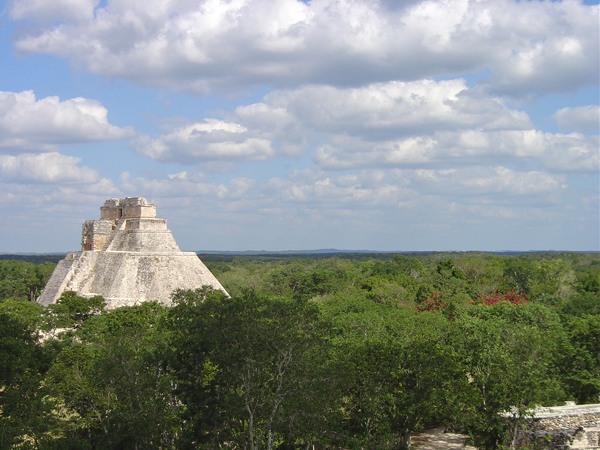Mexican Forests and the State

Since I know there is an insatiable desire among LGM commenters to discuss Mexican forestry issues, much more so than things that are actually important such as obsessing over which similar presidency will result from various Democrats, let me build on the post the other day about the cartels and illegal logging.
Mexico is a beautiful nation with large amount of forests. Given its income level, it should be able to protect those forests. But with the massive incompetence of the government, it is in fact one of the world’s worst nations these days on deforestation issues, compared to nations such as Haiti and El Salvador here.
According to the National Autonomous University of Mexico (UNAM), at least 70% of the wood sold in the country has an illegal origin, in a context of widespread impunity. On a legal level, illegal logging is not classified as a federal crime. Nevertheless, the federal norm establishes that a penalty of one to nine years in prison, and 300 to 3,000 days of fine, will be imposed on those who disassemble or destroy natural vegetation, cut, uproot, tear down or cut trees, or change the use of forests. However, according to open data from the former Attorney General’s Office (PGR in its Spanish acronym), from 2000 to 2018, very few investigations were opened for breach of said rule (53 in Oaxaca and 50 in Chiapas). In the federal Congress, legislators have presented various initiatives to criminalize illegal logging. Despite this, even when they were approved in the Senate, most of the initiatives were frozen in the Chamber of Deputies.
Leticia Merino Perez, from the Institute for Social Research (IIS in its Spanish acronym) of the National Autonomous University of Mexico (UNAM) denounced that, “the seizures of the Federal Attorney’s Office for Environmental Protection (PROFEPA in its Spanish acronym) reach only 30,000 cubic meters of wood, compared to 14 million cubic meters that are illegally extracted.” Illegal production and trade are a product of improper regulation and its discretionary application, and by corruption and lack of supervision in commercial channels. It should be stressed that illegal logging is a multi-billion dollar business, its colossal annual profits reaching between 10 and 15 billion dollars globally, according to the “Justice for Forests” report of the World Bank.
Cesar Suarez Ortiz, Bachelor of Political Science and Public Administration from UNAM, explains that one of the main actors that has positioned itself as responsible for illegal logging in Mexico is organized crime. Organized crime groups have diversified their sources of income to other activities beyond drug trafficking, one of them being the sale of wood. The production and sale of drugs fell to second place to give rise to the increase in the illegal markets of natural resources, among others.
Illegal logging is a respond to a national demand of 20 million cubic meters of wood per year, while less than seven million are produced in the country. This means that Mexico also has to import wood, part of it illegal. The Environmental Investigation Agency (EIA) revealed, for example, the existence of a criminal network of illegal timber trafficking, extracted from the tropical forests of the Amazon in Peru, whose main buyers are Mexico, China, and the United States. The investigation titled “The Moment of Truth” explains that illegal timber is stolen from unauthorized areas, including forests and protected areas, territories of native communities, and private property. The government of Peru, says the EIA issues false permits or includes geographically referenced trees that do not really exist or their location is so remote that their extraction is not viable. So with false permits, “trees come into existence on paper and therefore ‘legitimate’ transport authorizations can be issued.” Bribes and a black market for seemingly legal documents allow merchants to launder illegal timber. The exporters of these products then argue that they bought them “in good faith,” despite the fact that multiple investigations have shown – even with undercover videos – that this is not the case.
In other words, it’s hard to even separate legal from illegal logging like it is hard to separate the state from the rest of the massive crime problem in Mexico. There are bits of hope in the rest of the article, but the conclusion is pretty grim:
The policies and programs that have been implemented as a respond to the situation of forest resource management have been insufficient. Experts in the field consider that forestry policy requires progress in the clear definition of property rights, respecting the conditions of community property; identification and promotion of successful community forest management schemes and models; resources to increase technical capabilities and strengthen the social capital of producers; strengthen market and financing schemes to promote community development; and design a regulatory framework of incentives for producers to make a comprehensive and diversified management of their natural resources in favor of sustainable development and conservation.
All of that will require a whole lot more resources and transparency from the Mexican state than it has shown since, well, pretty much ever.


